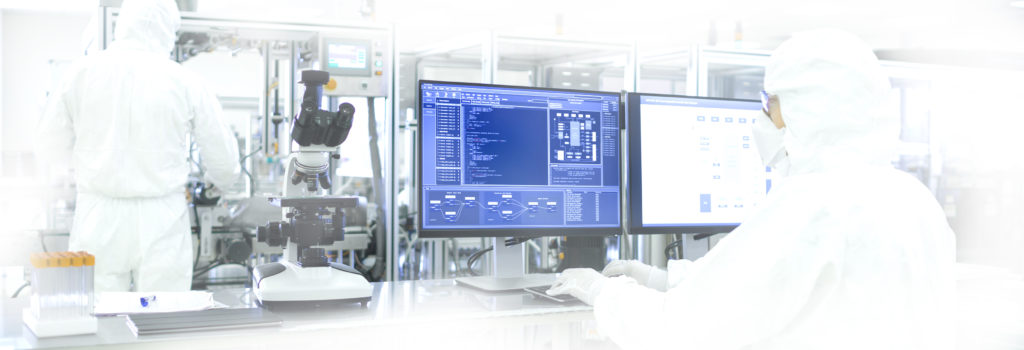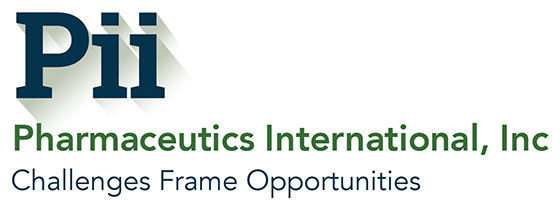The Art and Science of Tech Transfer – Establishing the Path for Success
The Art and Science of Tech Transfer – Establishing the Path for Success

Pharmaceutical technology transfer often invokes images of a complicated set of activities required to transfer the development and manufacturing of a product, or products, from one facility to another. It is similar to a high-stakes poker game where there are risks and rewards associated with each move and decision. For a drug sponsor company working with a contract development and manufacturing organization (CDMO), it can be nebulous and induce anxiety for researchers, company leadership, their investors, and most importantly, patients.
Our collective experience has taught us that each tech transfer comes with a unique set of complex processes that need to be understood for supporting knowledge transfer. When done correctly, it is precise, clear, and transparent between drug sponsors and service providers. While it includes the transfer of analytical methods and manufacturing processes, there is also a human dimension that must be considered. The relationship between the drug sponsor and CDMO is important, and so are the already existing supplier relationships.
This article shares five features of a successful tech transfer, imperatives that we have learned with a focus on drug sponsors working with CDMOs. These imperatives, when applied to project management operations, can deliver extraordinary results.

Relationship Building
Technology transfer marks the first opportunity for the drug sponsor and CDMO to work together closely and it will set the tone for the lifecycle of the project. Establishing cross-organizational rapport is vital and its pursuit should be intentional.
There are practical aspects to building the sponsor-CDMO relationship and much of the relationship will be captured in a contract manufacturing supply agreement (CSA). However, it is important to establish clear and transparent communications during initial meetings by restating and reinforcing roles and responsibilities, establishing procedures for clear lines of communication, and developing a resolution matrix and reporting expectations. Lastly, it is important to identify project-specific challenges with a plan to address them.
Challenges that arise during tech transfer can be opportunities for relationship building. Nothing strengthens a team better than solving a problem together. These opportunities create transparency between the two organizations and set the conditions for overcoming future challenges that might be more complex.
“IN THE WORD QUESTION, THERE IS A BEAUTIFUL WORD – QUEST. I LOVE THAT WORD. WE ARE ALL PARTNERS IN A QUEST.” — ELIE WIESEL

Why is the tech transfer occurring?
Transferring a product and process to a new facility happens for different reasons and we have discovered that knowing why is important to establish a path for success. Reasons for your tech transfer could be that you are seeking a CDMO to do clinical trial manufacturing, you are making your supply chain more reliable, or maybe there is a quality issue with your current CDMO. While each requires a tech transfer, the circumstances are different.
An early phase development project might focus the tech transfer on the product’s analytical data needed to continue development. A manufacturing project from a manufacturer outside the country would require focusing on process and quality systems data, perhaps in a different language. And for older products, more attention must be given to regulatory requirements that likely changed since first approved. Knowing why a tech transfer is being initiated establishes work priorities aligned with the drug sponsor’s outcomes and places the team on a path to achieving success—getting everything right the first time.

Continuous Improvement
Regardless of the reasons for initiating a tech transfer, it offers an opportunity to improve of the product and process. Continuous improvement (CI) has been embraced by the pharmaceutical industry, but not all organizations have had success in establishing a CI culture. The reasons for this vary, but this is not intended to examine the reasons why CI cultures don’t exist.
However, it is important to note that once a pharmaceutical manufacturing process has been validated and operational, changes, even for the purpose of CI, are not often an obvious path. While speed is a constant motivator in pharmaceutical development, tech transfer offers a natural opportunity for both product and process improvement. Tech transfer is a golden opportunity to re-examine the quality target product profile (QTPP), critical process procedures (CPP), and supply chain to include provider partnerships.

The Value of Questions
Experience has also taught us the value of good questions. During tech transfer, transparent access to data is critical, but questions promote dialogue and collaboration between drug sponsors and CDMOs.
Especially valuable are questions intended to understand data that supported key decisions or clarify specific paths taken by the drug developer. This probing activity is not intended to challenge the drug developer’s science, but rather for understanding and transparency.
Our favorite projects typically begin with a problem, and good questions often open the doors for innovative solutions. Ultimately, good questions lead to improved outcomes for our customers and patients. Our advice–ask questions!

Business Continuity – Customer Success Criteria
As a CDMO, we’re not developing and manufacturing our own pharmaceuticals; however, we have all done that. For our customers, knowing when a pharmaceutical product manufactured in our facilities will be commercially available is important, it is to us too. Our responsibility to advance the ideas of others from concept to clinic to commercialization is something we take seriously. Therefore, as part of a tech transfer, we must also understand business success criteria as defined by our customers.
Sometimes our customers are a bit surprised when we ask about business milestones tied to our work is supporting. Perhaps additional investment resources are contingent on an investigational new drug (IND) or new drug application filing. Or maybe a current manufacturing site for a marketed drug has quality issues, and a new facility is needed to avoid shortages. When armed with this kind of information, we’ve found that CDMOs can operate as an extension of the drug sponsor organization. It enables the CDMO to prioritize its own resources to accomplish key milestones important to the customer's company.
Pharmaceutical tech transfer doesn’t have to create anxiety. Experience has informed us that when the five imperatives introduced in this article are applied to project management operations, tech transfer can be a catalyst for extraordinary results.
Talk to a Pii Scientist
ABOUT Pii
About Pharmaceutics International (Pii)
Pharmaceutics International, Inc. (Pii) is a contract development and manufacturing organization (CDMO) with a passion for solving problems efficiently with the highest quality standards. Pii’s Hunt Valley, Maryland campus includes 70 manufacturing suites with 4 integrated aseptic filling lines delivering quality, safety, and efficiency. Our professionals have extensive experience with small and large molecule compounds, developing and manufacturing complex parenteral drugs, extended-release formulations, non-aqueous injectable drug products, and lyophilization.
ABOUT THE AUTHORS

Sundeep Sethia, Ph.D.
Head of R&D
Sundeep Sethia joined Pii in September 2018 as Senior Director of Pharmaceutical R&D. He has over 15 years of experience in the pharmaceutical industry.
Dr. Sethia formerly served as the Director of Pharmaceutical R&D at Amneal Pharmaceuticals. Prior to Amneal, he held positions of increasing responsibility at both Teva and Barr Laboratories in R&D. His expertise is in drug development across a broad range of therapeutic areas and dosage forms. He has a proven track record in generic drug development and approvals.
Dr. Sethia received his Ph.D. in Pharmaceutical Sciences from St. John’s University, NY. He earned a Master’s and a Bachelor’s degree in Biotechnology and Pharmacy, respectively from Jadavpur University in India. He has co-authored various peer-reviewed scientific publications and patents/patent applications.

Bryan Braxton, Ph.D.
Senior Director, Aseptic R&D
Bryan Braxton joined Pii in October 2018 as Senior Director of Aseptic R&D. Bryan has 30 years of experience in the pharmaceutical industry.
Bryan held roles of increasing responsibility in sterile products at both Unither, AMRI, Pfizer, Abbott, and Glaxo, in the areas of Formulation Development, Process Transfer, Quality by Design, Technical Services, Contract Services, and Project Management.
Bryan earned a Ph.D. in Pharmaceutical Chemistry from the University of Kansas and is a registered pharmacist.





